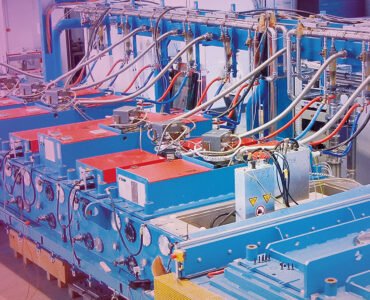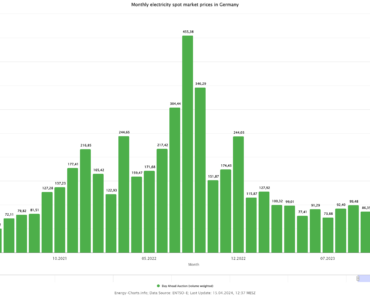The global photovoltaic market is growing rapidly. While the optimization of the efficiency, service life and price has been the main focus of solar module development up to now, the appearance of solar modules is now gaining more and more attention. A new type of coating process promises new color variety for solar modules, while maintaining high module efficiency.
The design of photovoltaic modules is especially important in the field of building-integration. In order to realize zero or plus energy buildings, PV modules are often installed in the façade as well as on the roof. Here the architects and building owners not only demand a good price to performance ratio but also require modules that are aesthetically pleasing and offer a variety of design options. There is a large demand for modules in different colors with a high saturation and homogenous appearance.
Conventional methods to color solar cells or cover glass offer a limited selection of colors and have a decisive disadvantage: Namely they cause comparatively high energy losses. Inspired by nature, we developed a new procedure to produce colored modules with minimal transmission losses and thus minimize losses in energy yield.
The Morpho Butterfly As Model

A phenomenon observable in the Morpho butterfly provided the starting point for our work. The fascination of the Morpho butterfly lies in its brilliant blue wing color. The reason this fascinating blue color is so noticeable, is not because of pigments on the wing surface as with other butterflies, but rather due to a three dimensional surface structure with lamellae in the nanometer range. The miniature lamellae, which can only be seen under an electron microscope, cause light to diffract and interfere. The many lamellae reflect light of a specific wavelength, in this case blue. The reflections reinforce one another so that a truly brilliant color is achieved.
The special highlight of this structure is that it remains transparent for the other wavelengths. Therefore, it is excellently suited for producing brilliant colors while maintaining a high light transmission. The reflected color can be specified by adjusting the distance between the lamellae.
From Bionic Principle to Product

At Fraunhofer ISE we have demonstrated the feasibility of producing such a color-giving three dimensional surface structure on large area cover glass for PV modules. The coating consists of a dielectric material enabling high color saturation as well as good incident angle stability. The color is individually adjustable. In comparison to uncoated cover glass, the colored modules exhibit a relative power loss of only 7 percent. Quite simply this means that a 150 watt module with colored cover glass produces ca. 140 watts.
Incidently, this is not the first time that researchers at Fraunhofer ISE have found solutions inspired by nature. Twenty years ago we developed large area antireflection layers based on moth eye structures to reduce surface reflections on solar modules. Today this type of antireflection coating is used in many other products on a daily basis, e.g. on displays for computers and smart phones.
Right now the coated cover glass for colored solar modules is still in the prototype phase. First test modules have already been manufactured. The next challenge is to optimize and scale up the production process to industrial level in cooperation with module and glass manufacturers. We are convinced that this technology not only allows wider design variations for solar modules, but also will contribute to a broader acceptance of building-integrated photovoltaics (BIPV).














Add comment